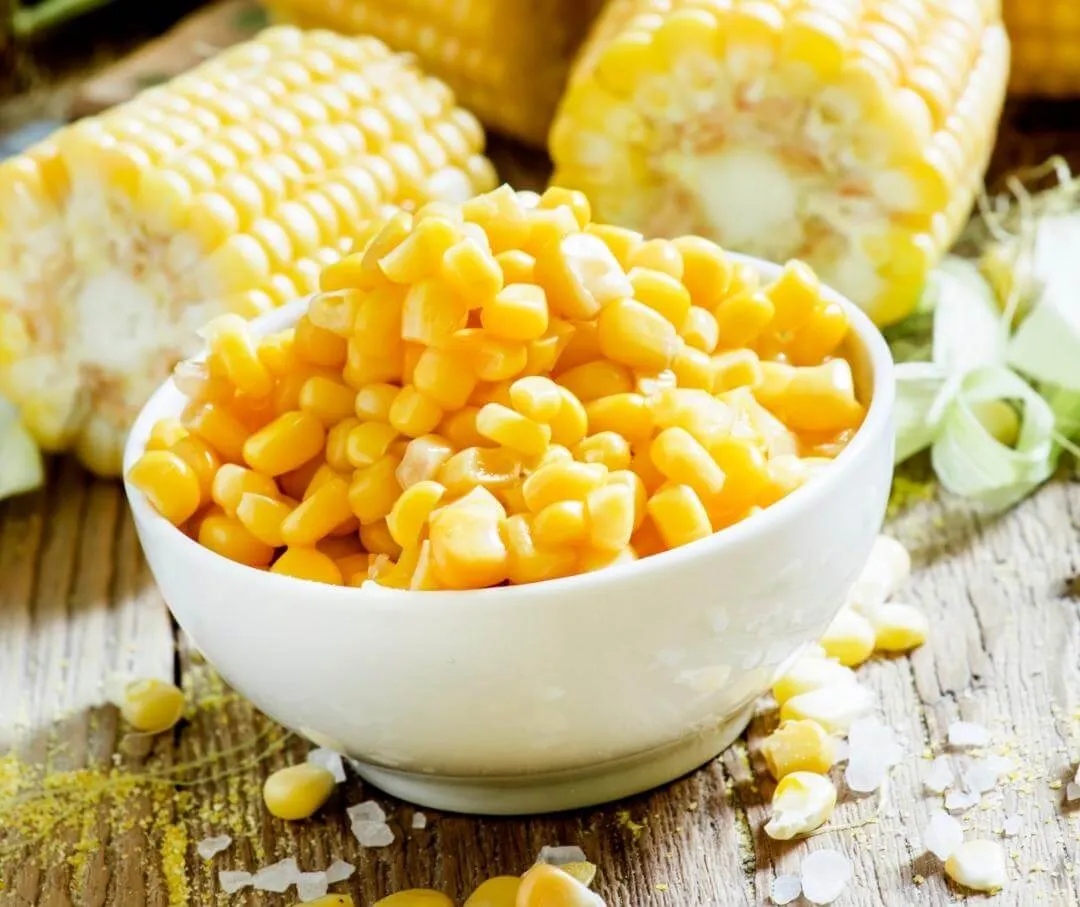Key Takeaways
- Glucose syrup and corn syrup are not the same thing. While all corn syrup is a type of glucose syrup, not all glucose syrup comes from corn.
- Corn syrup is a carbohydrate made from cornstarch, whereas glucose syrup can be derived from various starches, such as wheat, potatoes, or rice.
- Substitutes like honey, maple syrup, and agave offer alternative sweetening options to baking and cooking for those who don't want to use glucose syrups.
{{mid-cta}}
Glucose syrup and corn syrup are two liquid sweeteners often used in the food industry, but they're not the same thing. They both have similarities that help with food processing, shelf stabilization, and the specific culinary properties of foods that we purchase. However, they differ in where they might be, their chemical makeup, and their different uses in the food industry.
Nutrition-wise, they are both simple sugar carbs with comparable amounts of liquid glucose. Compared to table sugar, all dietary sugar syrups, including corn syrup products, may be associated with negative health effects when over-consumed. Even healthier sugars can be consumed in excess, and that high sugar content in your diet is associated with insulin resistance, obesity, heart disease, and more.
Ultimately, the FDA recommends keeping added sugar to less than 10% of your calories in a day.1 We will help you understand the difference between glucose syrup and corn syrup, how they compare to their nutrition, and the healthiest sugar sources you can use in your diet.
Glucose Syrup vs Corn Syrup: What Is the Difference?
Although both glucose syrup and corn syrup are used interchangeably, they are different. Let's explore their differences, definitions, substitutes, and more.
What Is Glucose Syrup?
.webp)
Glucose syrup is a super sweet, viscous liquid made from breaking down starch. It can come from different starchy sources, such as corn, wheat, potatoes, and rice. Glucose syrup is often used in commercial food production to add sweetness, improve texture, and prevent sugar crystallization. You will most often see it on the ingredient list of foods like candies, baked goods, and soft drinks to maintain their texture and stabilize shelf life.
Related: Fructose vs Glucose: Key Differences and Impact on Health
What Is Corn Syrup?
Corn syrup is a type of glucose syrup made specifically from cornstarch. It's a common sweetener in thicker and processed foods, contributing moisture to the final product and helping prevent sugar crystallization in confectionary baking.
Corn syrup comes in several varieties, including light and dark. Light corn syrup has a mild sweetness, while dark corn syrup has a more robust, caramelized flavor due to the addition of molasses.
Glucose Syrup vs. Corn Syrup: Main Differences
Both sweeteners are derived from the start, but they can differ in where they come from and how they are produced.
- Source: Corn syrup is exclusively made from cornstarch, whereas glucose syrup can be from corn or potatoes, wheat, or rice.
- Composition: Most consist of glucose sugar, while some glucose syrups can also contain maltose or dextrose, affecting their sweetness and function in baked goods.
- Usage: It is most common in the United States, where it is often found in the food supply, while glucose syrup is used more commonly internationally.
Related: Why Is My Fasting Blood Sugar High? Fasting Hyperglycemia
Types of Glucose Syrup
There are several types of glucose syrup, each with unique qualities:
- Confectioner’s syrup: A thick syrup used in candy making to prevent crystallization.
- High-maltose glucose syrup: Contains maltose and is commonly used in brewing and confectionery.
- Dextrose syrup: A glucose-rich syrup used in baking and food processing.
- Hydrolyzed wheat glucose syrup: A gluten-free alternative to traditional glucose syrup made from wheat.
Types of Corn Syrup
Corn syrup can take various forms, depending on its processing and intended use:
- Light corn syrup: A clear syrup with a mild sweetness, often used in baking and candy-making.
- Dark corn syrup: A darker, richer syrup with added molasses. It is commonly used in sauces or baked goods like pie (think pecan pie filling).
- High-fructose corn syrup (HFCS): A processed form where some glucose is converted to fructose, making it sweeter and commonly found in soft drinks.
Other types of syrup are made from fruit juices, inverted sugar, tapioca, cassava, and more, but the above are the most common.
Best Corn Syrup Substitutes
.webp)
If you're looking to cut back on added sugars in your diet, any kind of syrup (corn, glucose, or otherwise) may not be the healthiest choice. However, if you're looking for more natural alternatives to corn syrup, consider some of these options instead.
- Honey is great for glazes, marinades, no-bake desserts, and soft baked goods. Its viscosity is similar to corn syrup's, adding a mild floral sweetness while helping retain moisture. Use a 1:1 ratio, but reduce other liquid ingredients slightly since honey contains more water.
- Maple Syrup is good for pancake syrups, frostings, granola, and baked goods. It has a deep, caramel-like flavor and contains antioxidants and minerals. Use a 1:1 ratio, but note that it’s thinner and may not provide the same binding effect in candies or caramel.
- Agave Syrup is ideal for beverages, salad dressings, sauces, and soft baked goods. It’s a plant-based alternative with a lower glycemic index than corn syrup. Because it's sweeter, use ¾ cups for every 1 cup of corn syrup, and reduce other liquids slightly.
- Brown Rice Syrup is commonly used in granola bars, crisp rice treats, and health-conscious recipes. It has a thick, sticky consistency similar to corn syrup but is less sweet. Use a 1:1 ratio, or increase the amount slightly if more sweetness is needed.
- Molasses is best for gingerbread, barbecue sauces, baked beans, and rich desserts. Its strong, robust flavor adds depth to recipes. Use a 1:1 ratio, but since it has a much stronger taste, it’s best for recipes where its bold flavor complements the dish—otherwise, it’s too overpowering.
Related: Hyperinsulinemia: Symptoms and How to Treat
The Bottom Line
While glucose and corn syrup share similar properties, they are not the same. Corn syrup is a specific type of glucose syrup made from corn starch, while glucose syrup can come from multiple starch sources. Understanding their differences can help you choose the right sweetener for your cooking and baking needs. Ultimately, we recommend reducing added sugar in your diet or choosing the right sweetener for your needs.
Read Next: How to Check Blood Sugar at Home: Natural Glucose Monitoring
Using a CGM with Signos: Real-Time Data, Backed by AI
Signos pairs a real-time glucose biosensor with AI trained on tens of millions of data points to deliver personalized, science-backed guidance. See exactly how your body responds, and take action.
Learn how it works. Ready to get started? Join now.
Topics discussed in this article:
References
1. Added Sugars on the Nutrition Facts Label. FDA. Accessed February 13, 2025.


.webp)
.webp)
.svg)







.webp)


.svg)
.svg)
.svg)
.svg)
.svg)
.svg)
.svg)
